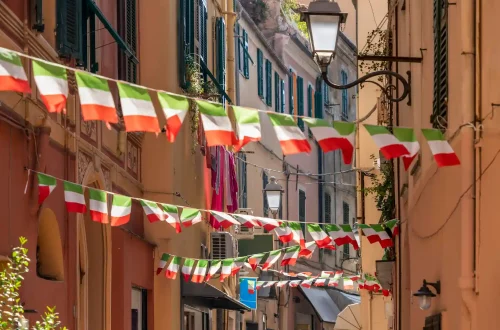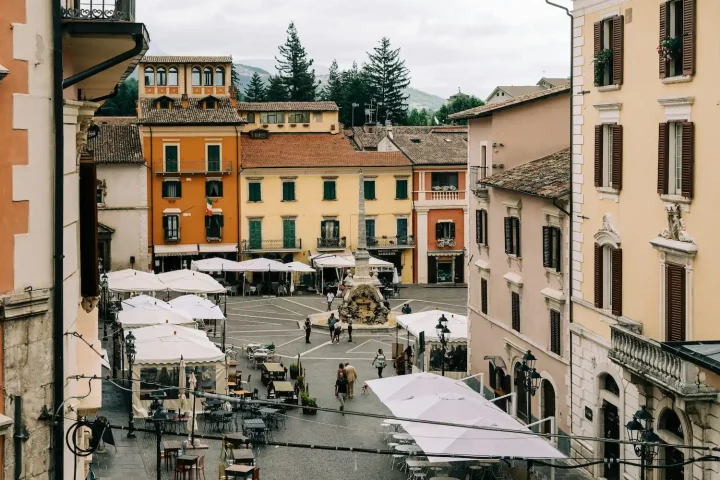With the intention of addressing Italy’s labor shortages, the Council of Ministers, under the leadership of Prime Minister Giorgia Meloni, has approved a new decree on labor migration and work visas.
Scheduled for implementation across the 2026–2028 period, the decree authorizes 497,550 legal entries for non-European Union workers with permanent or seasonal contracts—an increase from the previous allocation of 450,000 permits during the 2023–2025 cycle.
At a glance, the measure seems promising, reflecting the government’s intention to align immigration flows with the real needs of the domestic market. According to the decree, priority will be given to sectors struggling with chronic labor gaps—especially agriculture, tourism, logistics, food production, construction, and domestic services.
The stated goal is to manage immigration while ensuring effective integration of foreign labor into local communities. However, when examined more closely, the ambitious numbers and intentions run up against a tangled web of bureaucratic hurdles and structural inefficiencies that have plagued previous migration initiatives in Italy.
The new decree represents a continuation of the government’s attempt to balance two competing objectives: curbing illegal immigration and facilitating legal pathways for much-needed foreign labor. With Italy experiencing an aging population, a declining birth rate, and a consistent need for seasonal and manual workers, the business case for structured migration is undeniable.
The Excelsior Information System, an initiative involving Italian and European institutions focused on labor trends, projects a national demand for at least 640,000 immigrant workers by 2028—well above the quota proposed in the new decree.
The decree divides the permits across several categories, including non-seasonal, seasonal, and self-employed workers, with specific quotas allocated based on origin countries and the bilateral diplomatic ties Italy maintains.
The sectors that will receive the most attention include agriculture and tourism for seasonal work, and industries such as logistics, manufacturing, fashion, and furniture for longer-term roles.
To be eligible, applicants must have a formal job offer from an Italian employer. The process requires multiple stages: issuance of initial authorization, approval of a visa at the Italian consulate, contract finalization within Italy, and finally the granting of a residency permit. It is a multi-step process intended to ensure compliance and legitimacy, but it rarely works as intended.
Take advantage of specialized assistance to secure your passport for a borderless future.
Bureaucracy and bottlenecks
The main challenge isn’t the volume of visas but Italy’s bureaucratic bottlenecks, which continue to hinder the successful implementation of migration policy.
In the 2023–2024 cycle, only a small fraction of the available quotas actually resulted in permanent residency. In 2023, out of approximately 130,000 planned visas, only 74,000 received initial authorization (56%), and just 9,500 ended in valid residency permits—a success rate of only 7.5%. The 2024 figures reflect a similar pattern, and early indications suggest 2025 will follow suit.
Several factors contribute to this low success rate. One significant issue is the lack of enforcement mechanisms to hold employers accountable. In some cases, employers who initially commit to sponsoring a worker fail to appear before authorities to formalize the contract—leaving the applicant in limbo.
Other times, companies offer short-term contracts that expire before the visa or residency is finalized, leaving foreign workers vulnerable to exploitation and irregular employment.
This failure to complete the migration pathway leads many applicants—whether still in their home country or already in Italy—to abandon the process altogether. Some return home, but many remain in Italy without legal status, precisely the outcome the decree aims to prevent.
Mixed reactions from civil society and industry
While some industry leaders welcomed the decree, others expressed concern over its narrow scope and implementation flaws. Coldiretti, Italy’s major agricultural union, praised the measure as an “important step” to secure the workforce needed in the fields and ensure food production.
In contrast, CGIL, the country’s largest trade union, criticized the decree for failing to address the complexities of modern labor migration. According to union representative Maria Grazia Gabrielli, most quotas remain unused except for domestic and caregiving sectors, and the decree does not consider the dynamic nature of migration flows or adequately address the country’s true labor needs.
Gabrielli also condemned the government’s strategy of prioritizing visa candidates from countries that run media campaigns discouraging illegal immigration to Italy. This, she argued, politicizes migration and neglects worker qualifications or Italy’s sector-specific shortages.
Compounding the problem is the legal fragility of Italy’s foreign labor system, which experts warn is riddled with loopholes easily exploited by organized crime. Gaps in oversight and lack of legal safeguards for workers create an environment in which exploitation, blackmail, and informal employment thrive.
Workers whose permits expire mid-process are often subjected to coercion by employers or forced into undeclared labor markets, undermining the decree’s stated goals of integration and economic security.
Take advantage of specialized assistance to secure your passport for a borderless future.
Political positioning and the path forward for work visas
The decree reflects Prime Minister Giorgia Meloni’s balancing act between hardline anti-immigration rhetoric and the pragmatic need to supply Italy’s aging economy with a sustainable workforce.
Since her election in 2022, Meloni has promoted a tough stance on irregular migration, but with this decree, her government appears to acknowledge the necessity of opening regulated channels for non-European labor.
Interior Minister Matteo Piantedosi, in statements to La Stampa, defended the government’s approach, stating that the decree is still undergoing final revisions but signals a “determined effort to maintain legal migration paths for the benefit of strategic sectors of our economy.”
However, policy scholars and labor experts agree that without systemic reforms—particularly in streamlining bureaucratic processes, enforcing employer compliance, and safeguarding worker rights—the decree may once again fall short of its potential.
If Italy is to meet its projected labor needs while maintaining social stability, it must prioritize not only how many visas it grants but also how well it supports migrants once they arrive.






